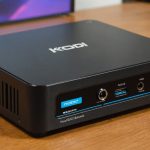Understanding Multi-Bay Thunderbolt 3 RAID Systems
In the realm of video editing storage solutions, Thunderbolt 3 technology stands out for its speed and reliability. Thunderbolt 3 offers unparalleled data transfer rates, reaching up to 40Gbps, making it ideal for handling high-resolution video files. This high-speed capability is particularly beneficial in multi-bay RAID systems, where the performance of video editing tasks is crucial.
Multi-bay Thunderbolt 3 RAID setups have several advantages. Firstly, they provide redundancy, helping to protect valuable data against hardware failures. Secondly, their high capacity supports significant amounts of data storage, accommodating the growing demands of video projects. Finally, these systems often allow for easy expansion, offering flexibility for future storage needs.
Also to see : The definitive handbook for enhancing your intel nuc for flawless 4k streaming with kodi
When considering specifications for optimal performance in a multi-bay Thunderbolt 3 RAID system, it’s important to assess the drive capacity and speed, along with the RAID level. RAID 0 can boost performance by striping data across drives but lacks redundancy. RAID 5 and RAID 6 offer a balance between performance and data protection. Always ensure that your chosen configuration supports your specific workflow requirements, enhancing both the speed and efficiency of your video editing tasks. The right setup can elevate your editing experience, making it seamless and robust.
Configuring Multi-Bay Thunderbolt 3 RAID for Video Editing
A multi-bay RAID configuration is essential for optimizing your video editing workflow. Here’s how to set it up.
In parallel : Essential tips for building a secure and efficient home automation system using your google nest hub
Begin by choosing a RAID level that suits your specific needs. For many video editors, RAID 5 or RAID 6 are preferable due to their balance of performance and data protection. RAID 5 offers increased read speeds and fault tolerance by distributing parity across drives, while RAID 6 provides extra security by using double parity, which is ideal for more sensitive data.
After selecting the RAID level, proceed to physically set up your multi-bay RAID enclosure. Connect the Thunderbolt 3 cables to your computer for high-speed data transfer. Ensure all drives are correctly seated in the bays and the enclosure is powered on.
Once hardware setup is complete, move to the configuration in your editing software. It’s crucial to adjust settings to maximize your RAID’s performance. Enable features such as background rendering and optimized media creation. This reduces timeline lag and improves playback quality use.
Finally, maintain your RAID system by periodically checking drive health and ensuring your data is secure, allowing uninterrupted editing sessions and optimized workflow efficiency.
Best Practices for Video Editing Storage Management
Effective video editing storage management is crucial for smooth editing workflows and protecting your valuable footage. Here are some strategies for ensuring efficient data handling:
Firstly, create a structured file organization system. Using clear naming conventions and folder hierarchies helps you quickly locate files. Consider organizing by project, date, or media type, which will save time in the long run.
For archiving, always duplicate important projects and store them in different locations. Whether using external drives or cloud storage, the redundancy ensures that your data remains intact even if failure occurs in one location.
RAID systems can significantly enhance performance and data safety. Regularly check RAID health by monitoring for signs of drive failure. Utilize RAID 1 for redundancy, RAID 5 for a balance of performance and safety, or RAID 10 if both highest speed and redundancy are required.
Implement consistent backup solutions. A 3-2-1 strategy, where three copies of data are stored on two different media, and one is off-site, is recommended. Tools like automated backup software can ease this process, ensuring you never overlook critical data protection steps. Efficient management ultimately safeguards against data loss while optimizing editing efficiency.
Troubleshooting and Optimizing Performance
One common challenge in multi-bay RAID systems involves dealing with unexpected performance issues. These can often be caused by bottlenecks in data transfer, degraded arrays, or failing drives. Understanding what causes these problems is the first step towards effective performance optimization.
RAID troubleshooting can start with using reliable tools and software designed for monitoring system performance. Applications like SMART monitoring tools or dedicated RAID management software can provide insights into individual drive health and overall array status.
When facing data transfer bottlenecks, it is beneficial to examine network infrastructure and cabling, as these are frequent culprits. Additionally, ensure that the RAID configuration matches the use case requirements. For instance, using RAID 5 or RAID 6 for read-intensive workloads can enhance performance.
If performance issues persist, consider optimizing storage policies. Tweaking strip size and adjusting backup schedules can lead to improvements in data throughput. Ensuring that hardware components such as controllers and memory are up to grade can also address bottlenecks efficiently.
A comprehensive approach to performance optimization involves combining software tools with practical strategies, ensuring the RAID system operates at its best.
Recommended Hardware and Software
When considering video editing, selecting compatible RAID hardware is crucial for optimising performance and efficiency. Top choices in multi-bay RAID enclosures often include models with high-speed data transfer capabilities, such as those supporting Thunderbolt. These enclosures are ideal for professional settings where large data throughput is necessary. Drives from reputable brands like Western Digital and Seagate are frequently recommended for their reliability and speed, ensuring your RAID setup meets the rigorous demands of video processing tasks.
Managing such systems effectively also requires robust video editing software capable of leveraging the RAID’s potential. Software like Adobe Premiere Pro and Davinci Resolve are widely favoured by professionals. They offer powerful tools and seamless integration with RAID systems, making them a staple in the editing industry.
When selecting your setup, ensure optimal compatibility between your RAID hardware and editing software. Consider factors such as supported connections, operating system compatibility, and specific software requirements. This alignment will prevent potential bottlenecks and maximize your editing efficiency, enabling smooth workflow continuity and superior video output quality. By carefully choosing your RAID configuration and accompanying software, you ensure a balanced, high-performance video editing environment.






